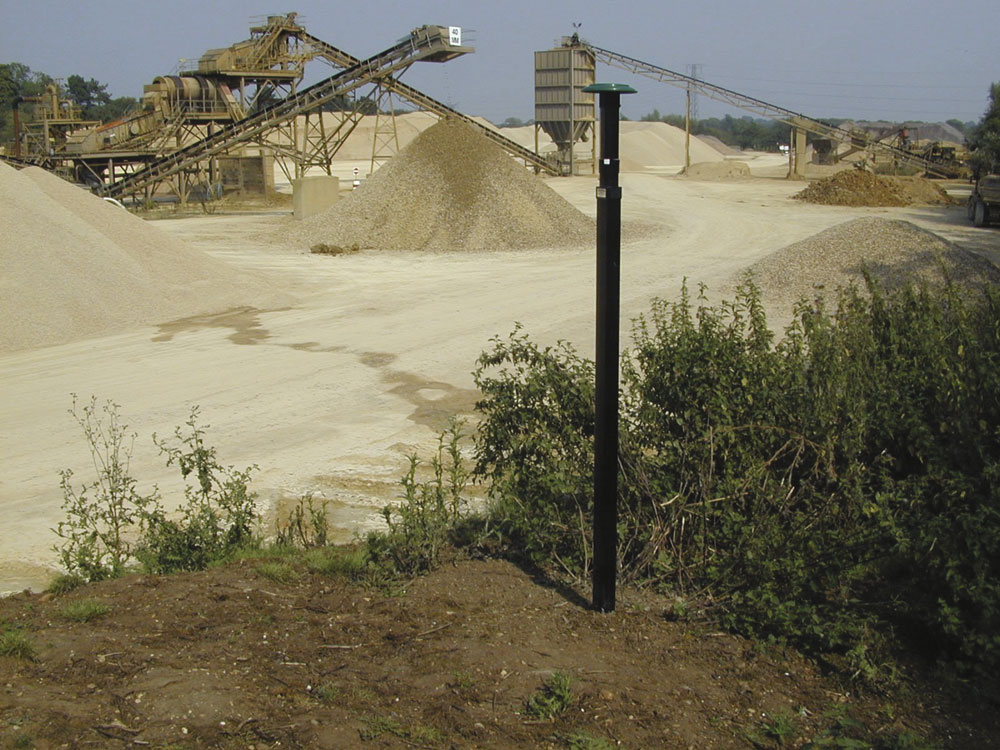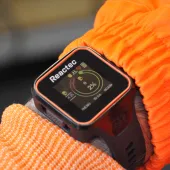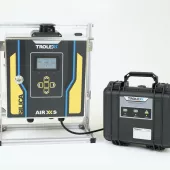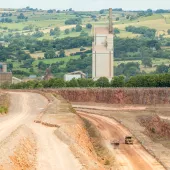Effective Dust Monitoring

The first step in dust control and suppression
By Prof. Geoffrey Walton and Hugh Datson, DustScan Ltd
Mining and quarrying is said to account for 11% of UK particulate pollution and, along with industry and construction, is estimated to generate 59,000 tonnes of PM10 dust annually1. For quarry operations, ‘dust’ relates to fine particles of rock 1–75µm (micron) in diameter. As it is easily lifted and transported by air movement, dust can be readily propagated within and beyond its point of origin. Unless deliberately engineered, dust is a waste of material and energy. It clogs filters and contaminates mechanical processes, reducing fuel efficiency and increasing wear.
Dust is also a major source of nuisance to households near quarries and dust settlement has impacts on ecological systems. Dust presents the greatest cause for concern for people living near quarries2.
Although dust may be an inevitable consequence of quarrying, control measures can be readily applied to reduce dust generation and propagation. Dust control can be engineered into a site by minimizing drop heights, reducing vehicle movements and by appropriate plant layout. Physical barriers, such as shielding, prevent air currents from transporting dust. Additives can be used to help reduce dust propagation. Particles tend to clump together when wet, and with increased size much more wind energy is required to cause dust to blow. Systems such as ‘atomization’ or additives, eg ‘wetting agents’, are designed to improve the tendency for damp particles to cling together. However, the most effective form of dust control is not to produce it in the first place. Effective dust control will help operators to increase efficiency and reduce costs.
In the absence of regulatory standards for dust-suppression techniques, choosing the most appropriate methods for any site can be a balance of experience, product availability and cost. However, before instigating any new control measures it may be appropriate to ask: Will they work and how effective will they be?
Dust is also a pollutant with health, and nuisance, implications. Dust up to 10µm (PM10) is regarded as inhalable, with associated risks to human health irrespective of mineralogy. Some dusts, such as silica and asbestiforms, have specific health impacts. Quarry operators are required to provide adequate dust protection for staff through health and safety legislation. All dust, regardless of particle size or composition, has the potential to cause nuisance — either long term, through soiling, or short term, through visual impairment. Quarry operators may also be obliged to carry out some form of site monitoring for ambient PM10 and/or nuisance dust. Many operators carry out ambient dust monitoring as part of an environmental management system (EMS). Effective dust monitoring can be combined with weather data to monitor the efficacy of dust suppression.
Different monitoring methods can be utilized according to requirement and suitability.
Equipment is available from a number of suppliers to record PM10 levels. Although there may be some discussion regarding operating method, calibration and security, such devices report in common and recognizable formats. However, the cost of purchase and security, and restrictions on location due to power requirements, make most PM10 equipment of limited value in assessing dust-control measures.
Good nuisance dust monitoring can be used for testing dust suppression. Systems are generally designed to be low-cost, permitting installation of several gauges per site. Common nuisance monitoring methods assess dust mass or dust flux. They are intended to evaluate some aspect of dust nuisance, such as dust settlement or soiling rate. Both are intended to describe potential nuisance, as it would occur at an off-site receptor. Systems exist that indicate ‘trigger levels’, irrespective of dust type or direction. Such trigger levels may be bound up with planning conditions. However, compliance monitoring alone cannot be expected to contribute much towards effective dust suppression and management.
Dust receptors, such as housing, are invariably located some distance off-site, therefore monitoring should ideally also take place off-site. However, this raises a host of questions, such as gauge positioning and fair attribution of dust sources. Not many quarry operators would be happy to leave equipment unsupervised in a ‘hostile’ garden. Consequently, much dust monitoring occurs at site boundaries. It is recognized that the distance dust travels is generally inversely related to particle size, so coarse particles tend to be deposited closer to their source. Therefore not all particles deposited at site boundaries may be likely to reach potential receptors, as they can be expected to settle. As a result, boundary monitoring through mass deposition alone may lead either to exaggerated nuisance dust assessments or reluctance to carry out dust monitoring. Yet it will be through good boundary monitoring that operators will be able to evaluate the effectiveness of their dust-suppression measures.
Directional monitoring at site boundaries can point to potential dust ‘hot spots’ where control measures should be stepped up, or where suppression can be minimized. From good observations of dust sources and pathways, site operators can maximize the value of dust-control measures. Effective dust evaluation will assist site management and generate efficiency savings.
In considering dust-suppression measures, some questions should be asked:
- Are dust suppression measures needed?
- What methods are most appropriate?
- How do they work?
- How can they be evaluated?
- Can they be measured through boundary monitoring?
- What monitoring methods are there?
- Which is the best method for the site?
Consideration of these questions may be of use in determining the most effective forms of dust control and suppression.
References
- Airborne Particles Expert Group (1999), ‘Source Apportionment of Airborne Particulate Matter in the United Kingdom’, DETR.
- Arup Environmental (1995), ‘The Environmental Effects of Dust from Surface Mineral Workings’, DoE.








